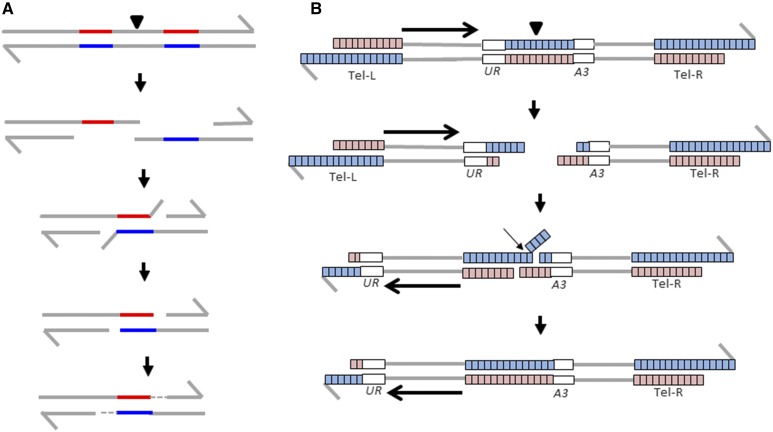Figure 4.
SSA as the mechanism for producing class 2 events. Each chromosome is shown as a double-stranded molecule. (A) “Classic” SSA. SSA is often analyzed in strains that have two closely-linked directly repeated genes separated by an HO or I-SceI site (Symington et al. 2014). Following DSB formation (shown by the arrow), the broken ends are resected and pairing occurs between the nonallelic repeats. The resulting single-strand branches are removed by the Rad1p/Rad10p/Msh2p/Msh3p enzymes and the gaps are filled in by DNA polymerase. (B) SSA as a mechanism for producing a class 2 event. Following DSB formation within the ITS, the broken ends are resected, allowing pairing between the left telomere and the centromere-containing DNA fragment. This pairing process requires Rad52p and is aided by Rad59p, but is independent of Rad51p. Following reannealing, single-stranded branches are removed as in (A) and the resulting gaps filled in by DNA polymerase. DSB, double-strand break; SSA, single-strand annealing.

